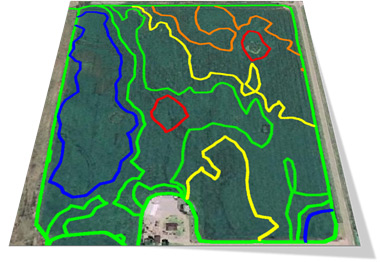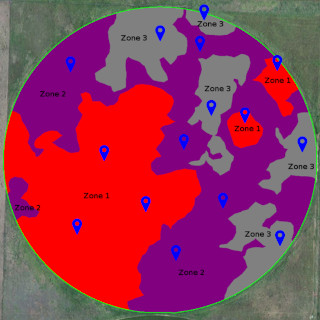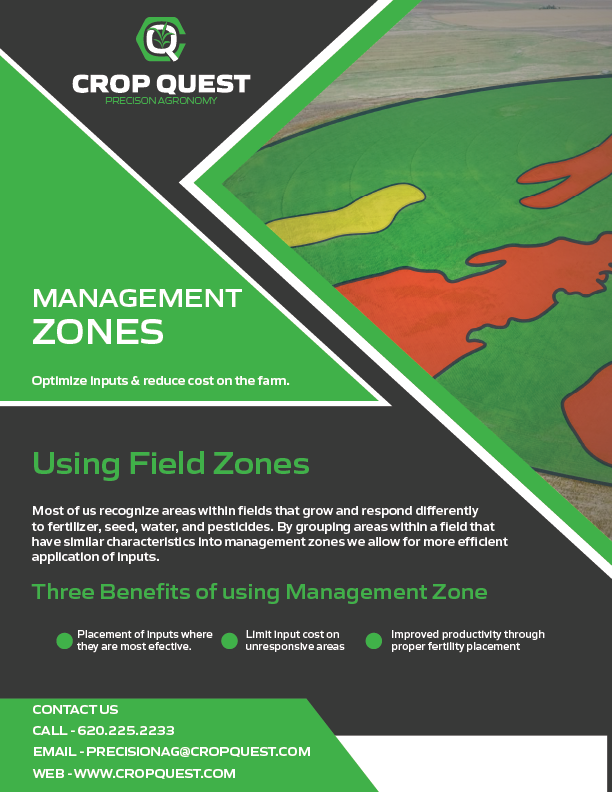ZONE SOIL SAMPLING
Zone soil sampling is a form of sampling that uses management zones to gain a better understanding of soil fertility. To clarify, by dividing a field into zones that respond similarly to applied fertilizer the soil test results are more consistent and accurate. Because fertilizer prescriptions rely on good soil test results, they also become a better custom fit for the field.
Agronomists will tell you that collecting soil test results over time adds value. That is to say, watching the nutrient level trends move as crops cycle through the years, is as important as the value of the soil test itself. Crop consultants dive deep into understanding why zones respond differently than other.

ZONE SOIL SAMPLING EVOLUTION
Similar to any other management zone, soil sampling zones should start simple and evolve over time. For example, zone samples may start by following terraces and waterways. These basic features are are easy to group into simple management zones. This is a pretty common practice that originated from the soil sampling methods many universities have taught for decades.
A zone soil sample is basically the evolution of the composite soil sampling method. Originally, we had features that were easy to see like drainage but with today’s technology the layers available have expanded. For example, soil texture mapping and yield analysis provide many added layers to base management zones on. Finally, the key is to refine the boundaries of the zone as you learn more about the field.



